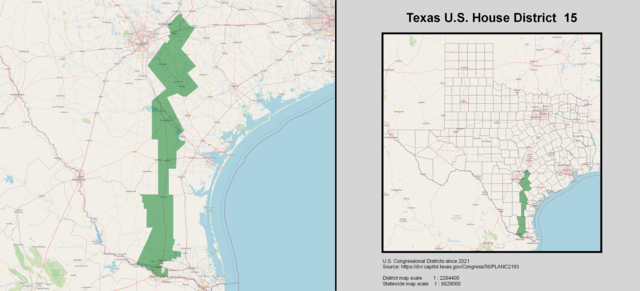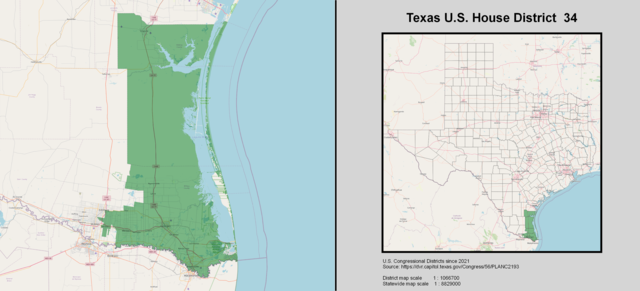By Caitlyn Meisner | Staff Writer
Midterm elections are just two weeks away. These are some of the races voters should be looking out for on election night.
Every state is participating in this election cycle, whether it’s through electing a new governor, state representatives or senators.
Below are some of the states with the most contentious races, according to political science professors at Baylor and FiveThirtyEight, a polling analysis website.
Dr. Pat Flavin, Bob Bullocks professor of political science, said any race that is below a 90-in-100 chance of winning is considered a competitive one.
“I would say if someone has a 70-30 chance, it’s not a toss-up; it’s definitely a competitive race, a race that deserves our attention,” Flavin said. “Once you get into the 60-40 or certainly 50-50, you might as well just flip a coin.”
The House of Representatives
Republicans are favored to win the House of Representatives during this election cycle, according to FiveThirtyEight and Flavin.
FiveThirtyEight predicts there is an 80% chance the House will flip from a Democratic majority to a Republican majority in November.
A majority requires 218 seats. Currently, Democrats hold 220 seats, and Republicans hold 212 seats; there are three vacancies.
There are 222 Democratic seats and 213 Republican seats up for election.
There are 197 seats predicted as “solid Republican” — meaning they have a 99% chance of going to that party — 16 “likely Republican” seats and six “leaning Republican” seats.
There are 163 seats predicted as “solid Democrat,” 30 “likely Democrat” seats and 13 “leaning Democrat” seats.
There are 10 “toss-ups.” The local “toss-up” districts are TX-15 and TX-34, according to FiveThirtyEight.
TX-15
The 15th congressional district is in the southern part of Texas, running from Hidalgo County toward Seguin. The largest city in this district is McAllen.

Photo courtesy of Wikimedia Commons.
Since it was created in 2013, the district has only been represented by Democrats. Currently, it is represented by Vicente Gonzalez (D), who is running for TX-34.
Michelle Vallejo (D) and Monica De La Cruz (R) are battling to represent the district. Vallejo is slightly favored to win, with a 59% chance over De La Cruz’s 41%.
Flavin said whoever wins this district will drive a particular narrative on election night, likely about the status of the Hispanic vote in southern Texas.
“If the Republican wins, I guarantee you’ll see story after story of ‘Republican gains among Hispanic voters on the southern border,'” Flavin said. “If the Democrat wins, you’ll see ‘Democrats hold their advantage among Hispanic voters on the border.’ Either of those is probably inaccurate because this was just a very close race.”
Flavin said if either candidate wins by a substantial margin, it will be unexpected and something to analyze.
TX-34
The 34th congressional district is also in the southern part of Texas, running between Brownsville and Corpus Christi. Some of the major cities include San Benito and Alice.

Photo courtesy of Wikimedia Commons.
TX-34 was created in 2013 and was represented by Filemon Vela Jr. (D) until his resignation in March 2022. A special election was held in June 2022, electing Mayra Flores (R) to the vacant seat.
Vicente Gonzalez (D-15) is running in the 34th congressional district against Flores. Gonzalez has a 67% chance of winning over Flores’ 33% chance, according to FiveThirtyEight.
Flavin said this is an interesting race because both candidates are incumbent representatives.
“There are maybe two or three districts around the country that have that,” Flavin said. “It’s a very Democratic-leaning district; that’s why Gonzalez is favored. But again, not a shoe-in. I wouldn’t be surprised if Flores wins.”
The Senate
Democrats are slightly favored to win the Senate with a 56% chance of capturing a majority, according to FiveThirtyEight.
Currently, the Senate is split with 50 Republicans, 48 Democrats and two independents. Vice President Kamala Harris is the tie-breaker.
A majority requires 50 seats. There are 21 Republican seats and 14 Democratic seats up for election.
FiveThirtyEight predicted 16 “solid Republican” seats and four “likely Republican” seats. It predicted eight “solid Democrat” seats, three “likely Democrat” seats and two “leaning Democrat” seats. Two races are considered “toss-ups”: Georgia and Nevada.
Flavin said Senate races are interesting to watch because of split-ticket voting — voting for two different parties in the same election — which has happened recently, especially in states like Georgia, Arizona and Pennsylvania.
“So, like a district where [they] voted for Biden but they voted a Republican, or they voted Trump and they voted for a Democrat [in the state],” Flavin said.
Georgia
Georgia’s Senate election is a tight race, with incumbent Raphael Warnock (D) having a 54% chance of winning over Herschel Walker’s (R) 46% chance, according to FiveThirtyEight.
Warnock won his seat in 2020 through a special election against Kelly Loeffler (R).
The race between Warnock and Walker has ebbed and flowed between both candidates. Walker had a slight lead over Warnock through July, but the race became 50-50 through August and September.
Flavin said Republicans have a good chance of taking Warnock’s seat, but there has been an underperformance of Walker.
Nevada
Nevada’s Senate election is also a “dead heat” race, with incumbent Catherine Cortez Masto (D) having a 47% chance of winning against Adam Paul Laxalt (R).
Cortez Masto’s lead was larger in August and September — at a 60-40 chance — but her lead has closed as Election Day approaches.
Flavin said Nevada is another likely Republican pick-up opportunity.
Pennsylvania
Pennsylvania’s Senate race has ebbed and flowed during the election cycle as well. John Fetterman (D) had a significant lead over Mehmet Oz (R) through August and September, but his lead is closing. Fetterman is slightly favored over Oz, at a 59% to 41% chance.
Flavin said Oz has underperformed for Republicans. He said this could be due to him being a slight underdog and not a “mainstream” Republican.
Dr. David Bridge, associate professor of political science, said it is good for the chambers of Congress to be split and for Democrats to hold the Senate.
“If the chambers are split, that’s still important for governance,” Bridge said. “If the Democrats keep the Senate, it’ll be much easier for Biden to appoint judges. Even lower court judges are really important. Appointments matter, and it’s much easier to do if your party controls the Senate.”
Both Flavin and Bridge said it’s normal for the president’s party to lose seats in the midterm elections.
“I think that the activity in terms of policymaking would be similar to Obama’s last two years, which was almost nothing legislatively,” Flavin said. “Instead, it would be through executive orders. And if the next president doesn’t agree with it, they can get rid of it day one. If the Democrats hold the Senate but lose the House — which is probably the most likely outcome — that’s what you’re likely to see.”





